

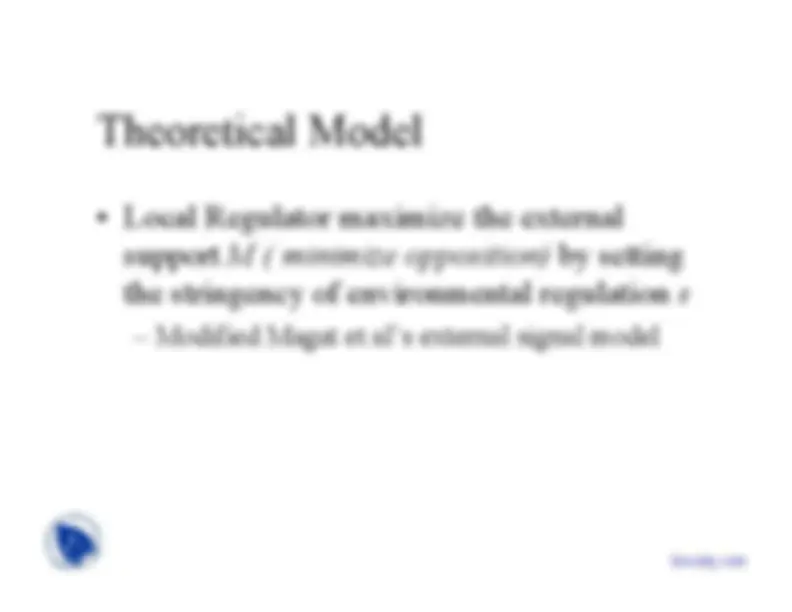
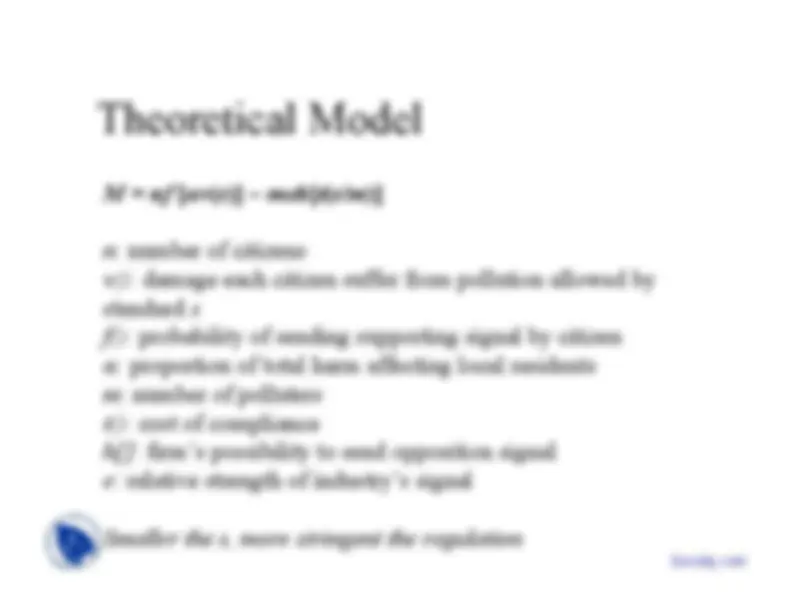

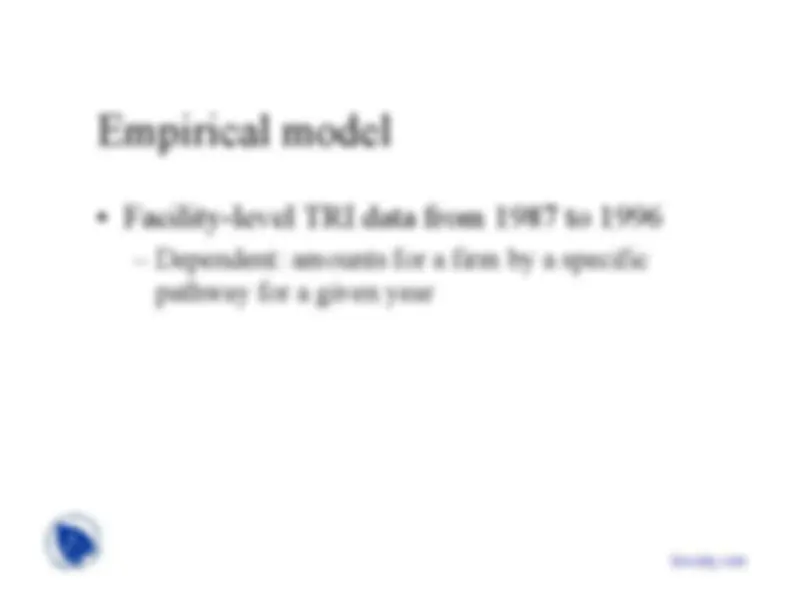
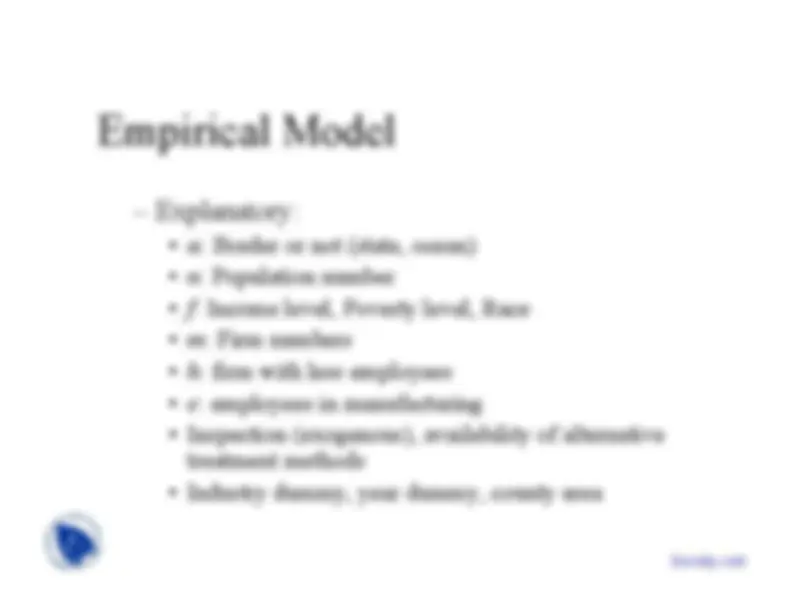
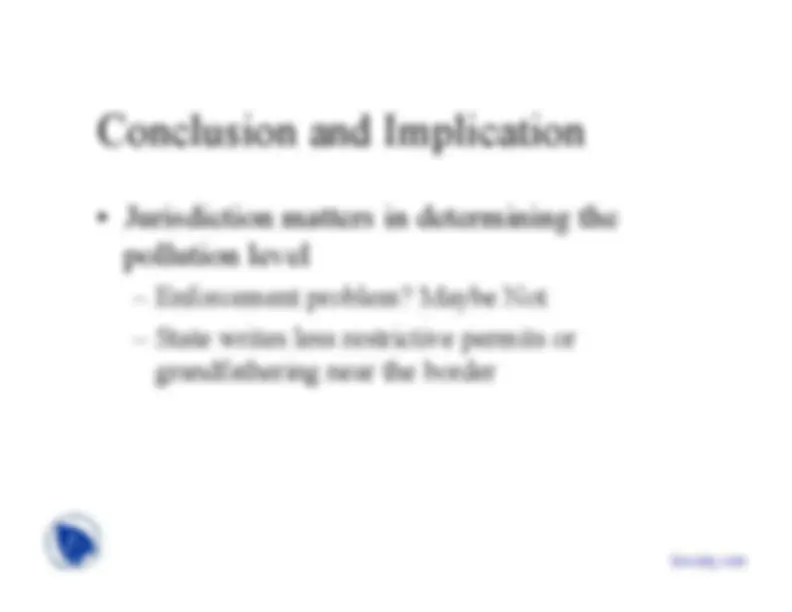
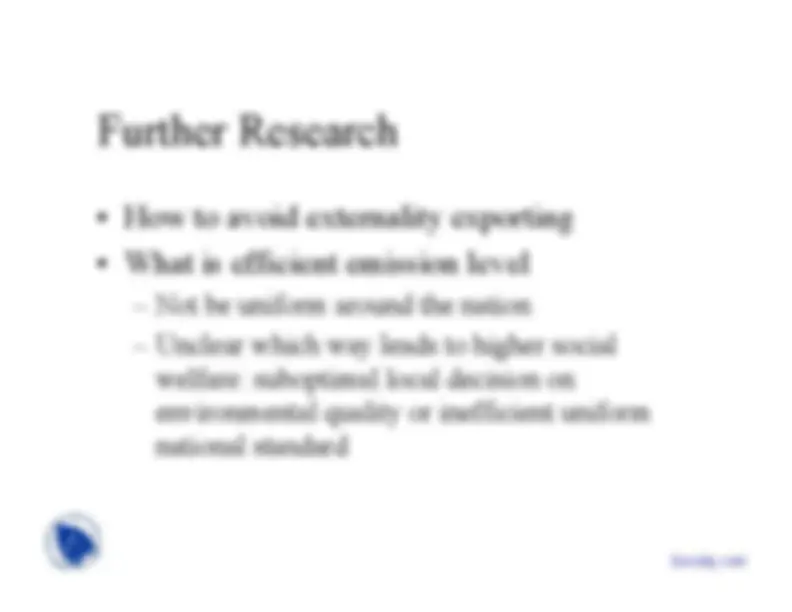


Study with the several resources on Docsity

Earn points by helping other students or get them with a premium plan


Prepare for your exams
Study with the several resources on Docsity

Earn points to download
Earn points by helping other students or get them with a premium plan
Community
Ask the community for help and clear up your study doubts
Discover the best universities in your country according to Docsity users
Free resources
Download our free guides on studying techniques, anxiety management strategies, and thesis advice from Docsity tutors
This lecture is from Environmental and Resource Economics. Key important points are: Pollution Incidence and Political Jurisdiction, Environmental Law, Local Regulator, Regulator Consideration, Quantitative Evidence, Location and Pollutant Pathway, Theoretical Model, Level Toxic Release, Theoretical Model, Minimize Opposition
Typology: Slides
1 / 14

This page cannot be seen from the preview
Don't miss anything!









pollution goes outside of the state so that borderpollution facilities are less stringently regulated
object to those
externality impose on neighboring states
=
nf
[
α
v (
s )] –
meh
[ t
( s
/ m
)]
n
: number of citizens v()
: damage each citizen suffer from pollution allowed by standard
s
f()
: probability of sending supporting signal by citizen α
:^
proportion of total harm affecting local residents m
: number of polluters t()
: cost of compliance h[]
: firm’s possibility to send opposition signal e : relative strength of industry’s signal Smaller the s, more stringent the regulation
Hypotheses
Pollutant pathway matters
α
: Border or not (state, ocean)
-^
n
: Population number
-^
f : Income level, Poverty level, Race
-^
m
: Firm numbers
-^
h
: firm with less employees
-^
e : employees in manufacturing
treatment methods
grandfathering near the border
welfare: suboptimal local decision onenvironmental quality or inefficient uniformnational standard